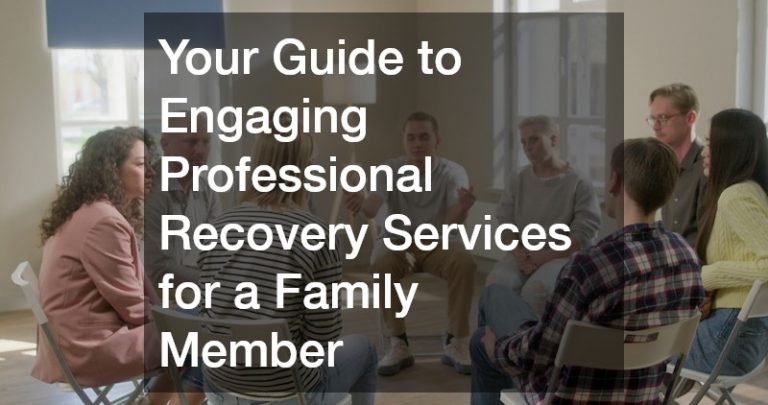As our parents age, one of the most significant decisions we may face is whether to help them remain in their home or transition them to a senior living community. Each choice comes with its own set of benefits and challenges. Understanding these can help you make an informed decision that best supports your parents’ well-being and quality of life.
Aging in Place
Aging in place allows your parents to remain in their own home while receiving the necessary support to maintain their well-being. This option offers comfort and familiarity but requires thoughtful planning and resources to ensure a safe and supportive environment. Here’s a detailed look at the pros and cons, along with practical tips to make aging in place successful.
Pros of Aging in Place
Familiar Environment:

Remaining in a familiar home can significantly reduce stress and anxiety. The comfort of their own space, surrounded by cherished possessions and memories, provides emotional stability and a sense of continuity. This familiar setting can make the aging process smoother and more manageable for your parents.
Independence:
Aging in place allows your parents to maintain their independence and daily routines. They can continue to follow their personal schedules, pursue hobbies, and engage in activities they enjoy, contributing to their overall happiness and mental well-being. This independence helps preserve their sense of self and autonomy.
Personalized Care:
Care can be tailored specifically to your parents’ needs, offering a personalized approach that may be more challenging to achieve in a senior living community. You can choose the types and levels of care they receive based on their preferences and requirements. Integrating adult day care services can also provide structured activities and social interaction during the day, complementing the care they receive at home.
Comfort and Emotional Well-being:
Being in a familiar environment helps maintain emotional stability. The comfort of their own home, with familiar routines and surroundings, can provide a strong sense of security and well-being. This emotional comfort can be beneficial for mental health, reducing feelings of anxiety or depression.
Customization of Space:
You have the flexibility to modify the home to fit your parents’ needs, whether by installing safety features like grab bars or making the home more accessible. This customization can ensure that their living space is as comfortable and functional as possible, tailored to their specific requirements.
Community Connection:
Staying in their own home allows your parents to remain connected with their local community. They can continue to visit favorite local spots, maintain social relationships, and participate in community activities, which can contribute positively to their social life and mental health.
Cons of Aging in Place
Home Modifications:
To ensure safety and accessibility, substantial modifications might be necessary. These could involve installing a stairlift to help with navigating stairs, adding grab bars to prevent falls in the bathroom, or widening doorways to accommodate mobility aids such as wheelchairs. These changes are designed to make the home safer and more accessible, but they can be expensive and may require periodic updates as your parents’ needs evolve.
In-Home Care Costs:
The expense of hiring professional caregivers or medical staff can be significant. Regular visits from in-home care providers, whether for personal care, medical needs, or companionship, can add up. It’s essential to budget for these costs and explore options such as insurance coverage or financial aid programs that might help manage expenses.
Isolation:
If mobility is limited, your parents might experience feelings of isolation or difficulty with social interactions. They may not be able to participate in community events or visit friends as easily, leading to potential feelings of loneliness. Ensuring regular social interactions and activities is crucial to prevent this isolation.
Maintenance and Upkeep:
Maintaining a home can become challenging as physical abilities decline. Routine tasks such as cleaning, gardening, and home repairs may become overwhelming. Regular maintenance is necessary to ensure the home remains safe and comfortable, but this can be a significant burden for older adults.
Emergency Preparedness:
In an emergency, response times may be slower compared to a senior living community where help is readily available. It’s important to have systems in place, such as medical alert systems or emergency response plans, to ensure prompt assistance in case of urgent situations.
Limited Access to Healthcare Services:
While in-home care can address many needs, certain medical services or treatments may require visits to external healthcare facilities. This can be challenging for those with limited mobility or transportation issues. Ensuring reliable access to healthcare services is essential for managing health conditions effectively.
Tips for Aging in Place
Assess Home Safety and Invest in Home Modifications:
A comprehensive home safety assessment is vital for identifying and addressing potential hazards. Engage a chair lift installer to facilitate mobility within the home, particularly if there are stairs that could pose a risk. Additionally, consider installing a walk in shower to make bathing safer and more accessible, reducing the likelihood of slips and falls.
Technology Solutions:
Incorporate technology to enhance safety and convenience. Installing door security systems can provide added protection and peace of mind. Security cameras can further bolster home safety by monitoring various areas of the house, including entry points and common areas. These technologies help monitor the home and ensure that any issues are promptly addressed. Also, integrate medical alert systems and smart home devices to assist with daily tasks and health monitoring. Telehealth services can further support remote medical consultations, making healthcare more accessible and manageable.
Enhance Mobility:
To increase mobility, consider investing in mobility aids like walkers and scooters. These aids can help your parents move around their home and yard more easily, reducing the risk of falls and improving their independence
You may also invest in a new golf cart to assist with transportation around the neighborhood. A golf cart is a practical solution for improving mobility, allowing your parents to easily navigate their neighborhood. This added mobility not only enhances their independence but also reduces the risk of accidents and falls.
Medical Equipment Needs:
Visit a medical equipment store to acquire essential items that improve comfort and accessibility. Look for mobility aids such as walkers or canes, adjustable beds for enhanced comfort, and grab bars for safety in bathrooms. These products can make a significant difference in your parents’ daily lives, contributing to their overall well-being and safety.
Hire In-Home Care:

Consider hiring a professional caregiver to provide assistance with daily activities, medical needs, or companionship. In-home care offers personalized support tailored to your parents’ specific requirements, ensuring they receive the help they need while remaining in their familiar environment.
Regular Check-Ins:
Regular visits or calls are crucial for monitoring your parents’ well-being and addressing any concerns that arise. Frequent check-ins help maintain strong emotional connections and allow you to stay informed about their health and needs. This ongoing communication is essential for ensuring that they receive appropriate care and support.
By addressing these key areas in detail, you can provide a comprehensive approach to aging in place, ensuring your parents remain comfortable, safe, and well-supported in their own home.
Moving to a Senior Living Community
Transitioning to a senior living community can offer your parents a supportive and enriching environment, with various levels of care and social opportunities tailored to their needs. This decision involves relocating from their current home to a facility designed to cater to seniors, providing an array of services and amenities.
Pros of Moving to a Senior Living Community
Comprehensive Care:

Senior living communities often offer a range of care options to meet different needs, from independent living to assisted living and memory care. This comprehensive care approach ensures that as your parents’ needs evolve, the community can provide appropriate support without requiring a move to a new facility. Independent living allows seniors to maintain a high level of autonomy while having access to healthcare services and assistance if needed. For those requiring more support, assisted living and memory care provide tailored services to manage daily activities and health conditions.
Social Engagement:
One of the significant advantages of senior living and retirement communities is the opportunity for social interaction. These communities typically offer a variety of social activities and events designed to keep residents engaged and active. From group outings and fitness classes to hobby clubs and social gatherings, these activities help reduce feelings of isolation and promote a vibrant social life. This increased social engagement is beneficial for mental health and overall well-being, providing a sense of belonging and community.
Maintenance-Free Living:
Senior living communities often include maintenance-free living as part of their service package. This means residents do not have to worry about home upkeep, repairs, or cooking. Facilities usually provide housekeeping services, meal plans, and landscaping, allowing residents to focus on enjoying their time without the burden of household chores. This can be particularly advantageous for seniors who may find home maintenance challenging and prefer a more convenient lifestyle.
Cons of Moving to a Senior Living Community
Adjustment Period:
Relocating to a new environment can be a significant adjustment for seniors. The process of moving can be stressful, and adapting to a new living arrangement may take time. Your parents might experience feelings of uncertainty or nostalgia for their previous home, which can be emotionally challenging. It’s important to provide support and patience during this transition period to help them acclimate to their new surroundings.
Cost:
Senior living communities can be expensive, with costs varying based on the level of care and the amenities offered. Independent living is generally less costly than assisted living or memory care, but the expenses can still be substantial. It’s essential to carefully review the pricing structure and understand what is included in the fees to ensure that the community fits within your financial plan.
Loss of Familiarity:
Leaving a long-time home can be emotionally difficult for many seniors. The familiarity of their previous environment, including friends, routines, and personal belongings, can be challenging to leave behind. This sense of loss can impact their emotional well-being, making it crucial to provide reassurance and support throughout the moving process.
Tips for Choosing a Senior Living Community
Tour Several Communities:
To make an informed decision, visit multiple senior living communities to compare their services, amenities, and overall atmosphere. This allows you to assess the quality of life offered at each facility and find the best fit for your parents’ needs and preferences. Pay attention to the cleanliness, staff interactions, and the general vibe of the community during your visits.
Evaluate Care Options:
Ensure that the facility can meet both current and potential future care needs. Evaluate the availability of disability services and how the community manages different levels of care. It’s important to choose a community that offers a continuum of care, from independent living to more intensive support, ensuring that your parents’ needs will be met as they change.
Choose a Convenient Location:
Select a community that is conveniently located for family visits and close to healthcare providers. Proximity to family members and familiar healthcare professionals can ease the transition and provide additional support. Consider the community’s location in relation to your parents’ favorite local spots and social connections.
Understand the Financial Details:
Carefully review the contract terms and fees associated with the senior living community. Ensure you understand what is included in the cost, such as meals, utilities, and access to services. This will help you avoid unexpected expenses and ensure that the community aligns with your financial plans.
By considering these factors and tips, you can make a well-informed decision about moving your parents to a senior living community, ensuring they receive the care and support they need while enjoying a fulfilling and engaging lifestyle.
Making the Decision
Deciding whether to support your parents in aging in place or relocating them to a senior living community involves a thoughtful evaluation of their health, financial situation, and personal preferences. Both options have their merits, and understanding the key factors can help guide you in making the best decision.
Assess Medical Requirements:
The primary consideration when choosing between aging in place and moving to a senior living community is your parents’ health and the level of care they require. If your parents have significant medical needs that require frequent attention or specialized care, a senior living community may be more appropriate. These communities offer various levels of care, including assisted living and memory care, which are designed to meet complex health needs effectively. For example, communities with on-site medical staff and access to healthcare services can provide the necessary support for conditions that require regular monitoring and treatment.
Evaluate Care Support:
In contrast, aging in place might be suitable for those who require minimal medical intervention. However, it’s important to consider whether their current home can be adapted to accommodate their health needs. This may include installing safety features or arranging for in-home care services, which can provide medical assistance and support for daily activities.
Compare Costs:
A comprehensive financial assessment is crucial when deciding between aging in place and moving to a senior living community. Compare the costs associated with in-home care, such as hiring professional caregivers and making home modifications, versus the expenses of a senior living community, including accommodation, services, and amenities.
Understand Pricing Structures:
Senior living communities can vary widely in cost depending on the level of care and the range of services provided. Some communities may include utilities, meals, and housekeeping in their fees, while others may charge separately for these services. On the other hand, in-home care costs can also add up, especially if continuous assistance is required. Consider your family’s financial situation and budget to determine which option is more feasible and sustainable in the long term.
Consider Emotional and Social Needs:

The importance of elderly care extends beyond physical health; emotional well-being is equally crucial. Consider your parents’ preferences for their living environment and how they might adapt to a change. Aging in place allows them to stay in a familiar setting, which can provide comfort and stability. However, moving to a senior living community might offer enhanced social interactions and a sense of community that can positively impact their emotional health.
Involve Your Parents in the Decision:
Involving your parents in the decision-making process is essential to ensure their comfort and satisfaction. Discuss their feelings about moving and their preferences for living arrangements. Address any concerns they may have and provide reassurance about the benefits and support available in both scenarios. This collaborative approach not only respects their autonomy but also helps them choose an option that aligns with their desires and needs.
Final Thoughts
By carefully evaluating health needs, financial considerations, and emotional well-being, you can make an informed decision that best supports your parents’ overall quality of life. Ultimately, the goal is to support your parents in living their best life with dignity and comfort. Whether they stay in their home or move to a senior living community, the right choice will depend on their individual needs and circumstances.











